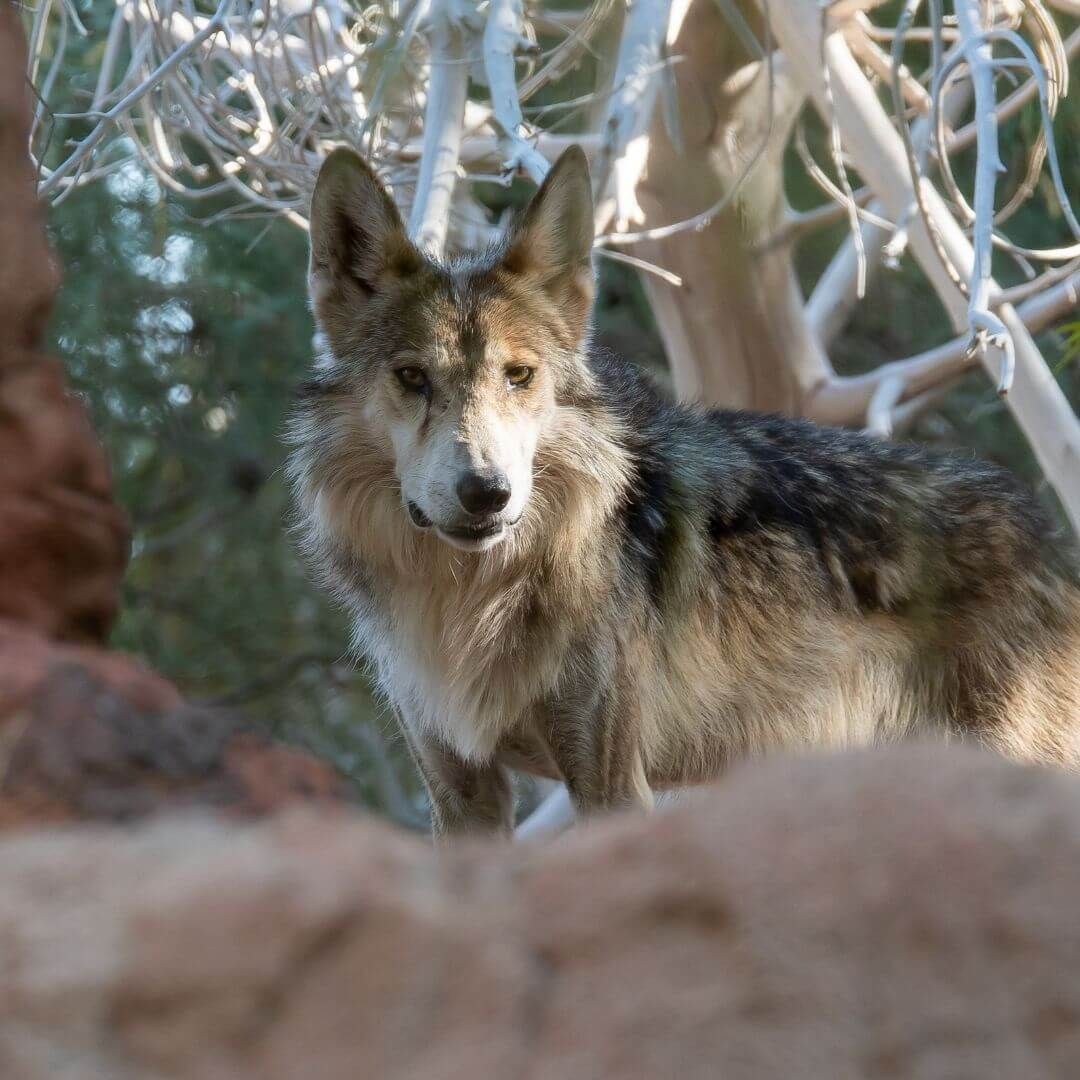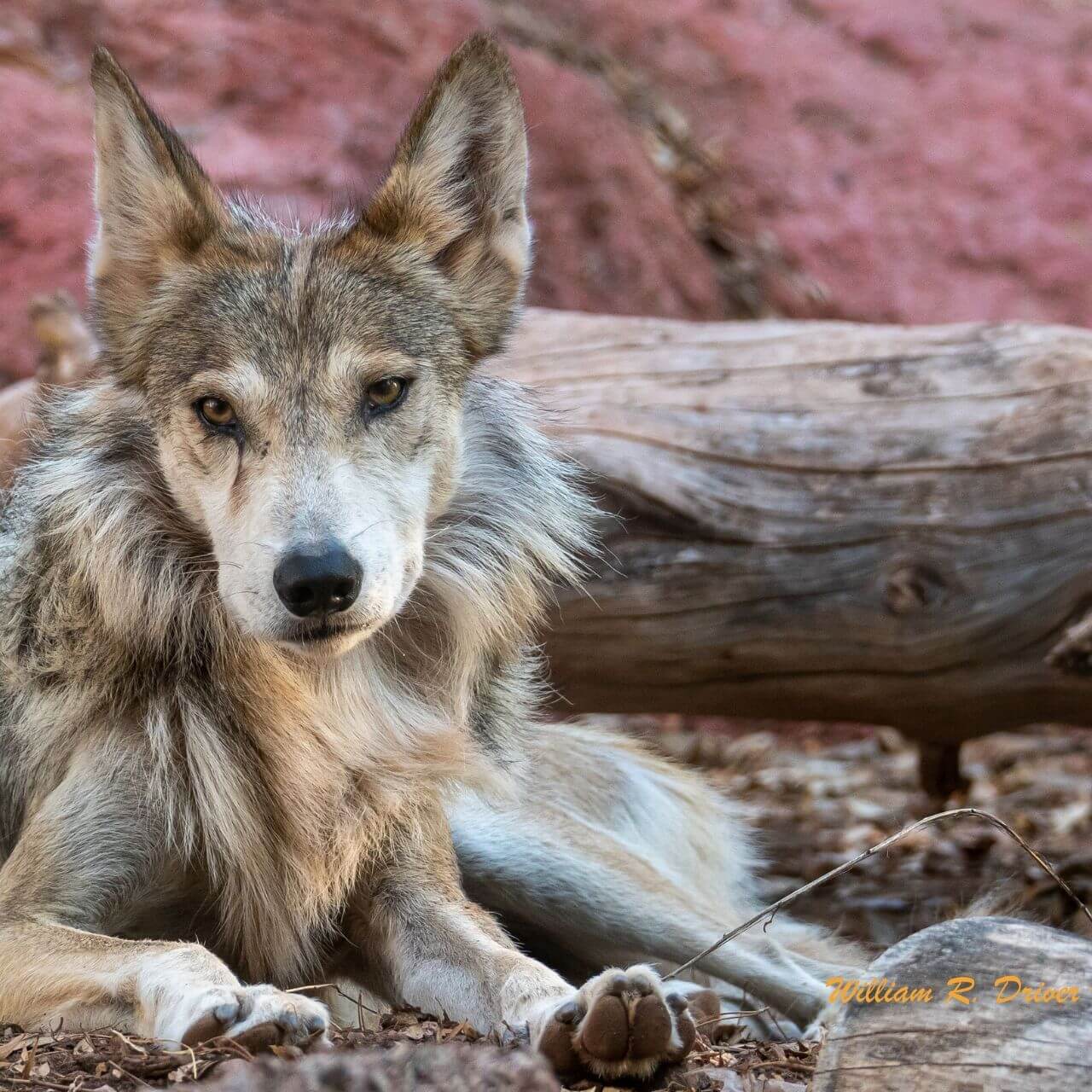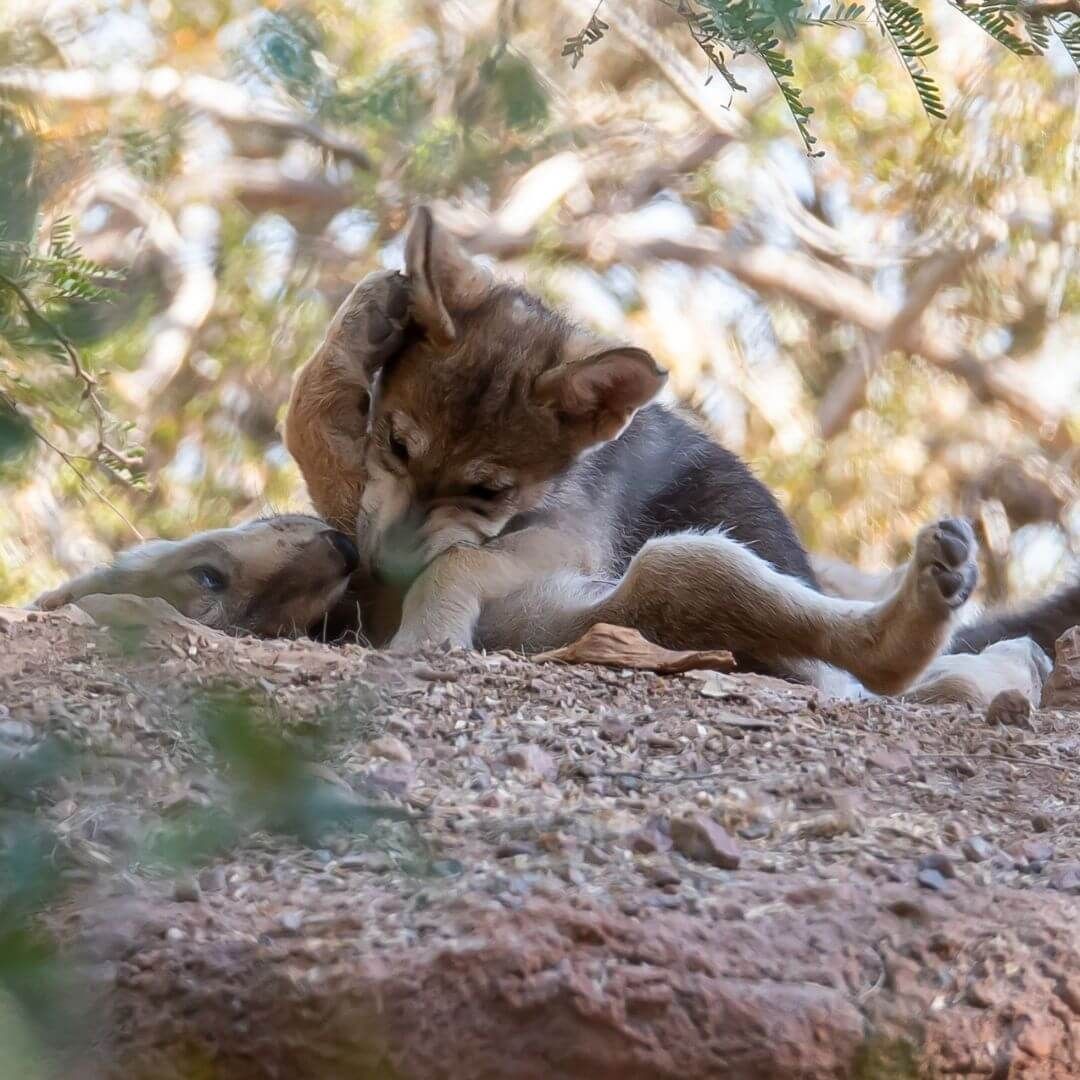Mexican Gray Wolf

Let's Learn About Mexican Gray Wolves
Word of the Week
Cross-Fostering
Cross-fostering is a process used in wildlife conservation where an animal's offspring is raised by different parents.
For Mexican wolves, cross-fostering is used when zoo-born wolf pups are moved into the den of a wild wolf. Then, they are raised by the wild wolf parents as part of their pack.
Fast Facts

Where do Mexican gray wolves live?
Mexican gray wolves are found in the southwestern United States and northern Mexico.
Mexican wolves inhabit woodlands and forests. The group that lives in the United States is separate from the population in Mexico.
What do Mexican gray wolves eat?
Mexican gray wolves are carnivores.
Most of their diet is different members of the deer family, like elk, white-tailed deer, and mule deer. They also feed on peccaries, wild turkeys, and other small animals.


What traits do Mexican gray wolves have?
Mexican gray wolves are subspecies of gray wolf. Most Mexican gray wolves...
- Live in packs.
- Create shelters in dens.
- Live in forests and woodlands.
- Communicate with scents and vocalizations like howls, barks, and whines.
How many Mexican gray wolves are there?
Mexican gray wolves are one of the most endangered subspecies of gray wolves.
There are well over 200 individuals in the wild. They are very closely monitored by scientists. Nearly 400 individuals live in zoos and many are part of a breeding program.

Species Spotlight
Gray Wolf
Canis lupus
I’ll huff, I’ll puff, and I’ll blow your house down!”
The Big, Bad Wolf painted wolves as scary villains in our brains ever since we were children. However, wolves, like many predators, are misunderstood. They get a bad reputation even though they have many jobs that make them important.
Gray wolves are powerful predators with a huge range across North America, Europe, and Asia. There are more than 30 subspecies of gray wolves each with different names, like the Arctic wolf, Arabian wolf, and Mexican wolf.
Wolves live in groups called packs. Most gray wolves are monogamous, meaning they have one mate. They often mate for life. Packs usually have a breeding pair and their offspring from previous years. They work together to create new territories, raise offspring, and hunt.
Wolves are an important part of their native food webs. They keep populations of deer, elk, hogs, rabbits, and dozens of other animals in check by eating them. Without wolves, their populations would grow too large. They would continue to eat plants until the ecosystem is overgrazed, meaning there are not enough plants left for them to survive. Without wolves, entire ecosystems can collapse, which is why we need to protect them.
BRAIN BLAST
Gray wolves are monogamous and often mate for life. Make a list of 5 other animals that typically have the same mate for their whole life!
Conservation Corner
Cross-Fostering
Scientists have been working to save Mexican wolves from extinction for almost 50 years. They protect wild wolves, but they also keep wolves in captivity, like in zoos, where they have a safe space to reproduce and have healthy offspring. Wolves born in zoos can be released into the wild to keep the wild population healthy.
For many years, only adult wolves were released into the wild. Learning how to hunt or form new packs was challenging for them because they were raised by people. Many of these adult wolves survived, but scientists agreed that reintroduced wolves would have a better chance of surviving if they were raised in the wild by wild wolves.
Eventually, scientists developed a process called cross-fostering. In cross-fostering, wolf pups born at a zoo are snuck into the den of wild wolves and raised as a part of their pack. For cross-fostering to work, wolf pups in the zoo need to be born at almost the same time as wolf pups in the wild.
Scientists take the zoo-born pups into the wild and wait for the wild wolf parents to leave their den. Once gone, they remove all the wild wolf pups from the den. They rub the zoo-born pups and the wild-born pups together to make sure they smell the same. Then, they return all the pups to the den.
Luckily, wolves can’t count! When the wild wolf parents return, they don’t realize their family has grown. They raise all the pups as a part of their pack, teaching them how to survive as wild wolves.
Mexican Gray Wolf Challenge
After watching the video below, pretend you are a wolf biologist and write an article for the local newspaper telling us about the cross-fostering process.
Beginner
After watching the video above, pretend you are a wolf biologist working on the cross-fostering project.
Answer the questions on the attached worksheet.
Expert
After watching the video above, pretend you are a wolf biologist working on the cross-fostering project.
Write an article for the local newspaper describing cross-fostering. Use the attached worksheet as your guide.
Learn More!
Glossary
Captive Breeding Program
A program that allows endangered animals to live and breed in captivity (like at a zoo) where they are protected from environmental threats.
Captivity
When animals are kept and cared for by people (like in a zoo).
Carnivore
An animal that primarily eats meat.
Conservation
The act of preserving the environment.
Cross-Fostering
A process used in wildlife conservation where an animal's offspring is raised by different parents.
Endangered
An organism that is threatened with extinction.
Extinct
When an organism has no living members remaining.
Human-Wildlife Conflict
Occurs when humans and wildlife live in close proximity and negatively impact each other.
Livestock
Farm animals that are used to benefit humans (cows, pigs, goats, etc.).
Predator
An animal that hunts other animals for food.
Prey
An animal that is hunted and eaten by another animal.
Reintroduction
Returning an organism to its natural environment.
Species
A closely related group of animals with similar characteristics that are capable of reproducing (example: there is 1 species of gray wolf).
Subspecies
A group within a species that is genetically different from other groups in the same species (example: there are many subspecies of gray wolf, like the Mexican wolf and Arctic wolf).
Sign Up for our Newsletter
Stay up to date with new adventures, live classes, deals, and more!

Helpful Resources
*Please note we do not offer refunds for EdZOOcating Adventures memberships. We recommend you explore the 3-day free trial prior to subscribing!*




